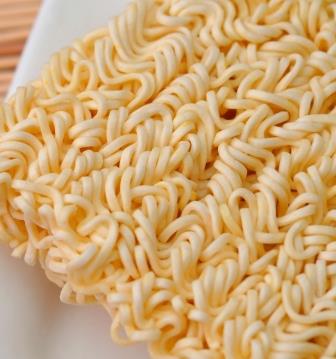The instant noodles segment in Asia Pacifc is expected to record a compound annual growth rate (CAGR) of 3.70% from USD27.39 billion in 2019 to USD31.67 billion by 2023, says data and analytics firm, GlobalData.
Khushboo Jain, Consumer Insights Analyst at GlobalData, says: “As more people are staying home and avoiding outdoor activities amid the outbreak, the sales of instant noodles have peaked in recent days. The current utility-owned instant noodles are affected primarily by the COVID-19 pandemic and their demand has skyrocketed in recent days as consumers are actively stockpiling the emergency supplies in the APAC.”
The volume consumption of instant noodles in the APAC region set to increase from 8925 million kg in 2019 to 9395 million kg in 2023. The convenience and economical value of instant noodles are amongst the key factors attributed to their continued strong market presence and upswing in sales. The APAC is home to the world’s fastest-growing market for instant noodles, which is reflected in the size of its industry and the rapid rate of expansion in output over recent years.

The APAC accounted for the largest market share of around 85% in 2020 and is projected to grow at a CAGR of 3.37% over the next four years. China is one of the leading markets in the APAC region, accounting for the largest market share of around 60% in 2020.
Low cost, product variety, long-shel life and increasing demand for convenience foods are fuelling the sales of instant noodles in the APAC region. The per capita consumption is increasing from 2.19 kg in 2019 to 2.35 kg in 2023 with a growth rate of 7%. The prominent players in the APAC instant noodles market are Tingyi Holding Corp (China) Toyo Suisan Kaisha, Ltd. (Japan), Nissin Foods Co., Ltd (Hong Kong), Nestle SA (India) PT. Indofood (Indonesia) and Nongshim Co Ltd (South Korea) which together account for around 35% market share.
Innovations in instant noodles can effectively tackle the taste-health paradox revolving around it, particularly through marrying indulgence with nutrition and other health benefits. To elevate the image of instant noodles, manufacturers are focusing on launching healthy and nutritional products, with added fibre, reduced salt and vegetables. For instance, Nissin Food Co. reduced sodium levels in instant cup noodles and launched smart salt intake indicator for consumers.
Jain concludes: “Instant noodles have become savior for many people amidst this pandemic. With people across the APAC being asked to stay home for the past few weeks and several cities now going on a strict lockdown the demand for easy to cook products such as instant noodles are bound to rise as consumers are stockpiling staple food products and creating more challenges for the companies to continue supply under demanding situations. As a result, it is important for the companies to satisfy consumers with both inexpensive instant noodles and fancier varieties of their old favorites.”














